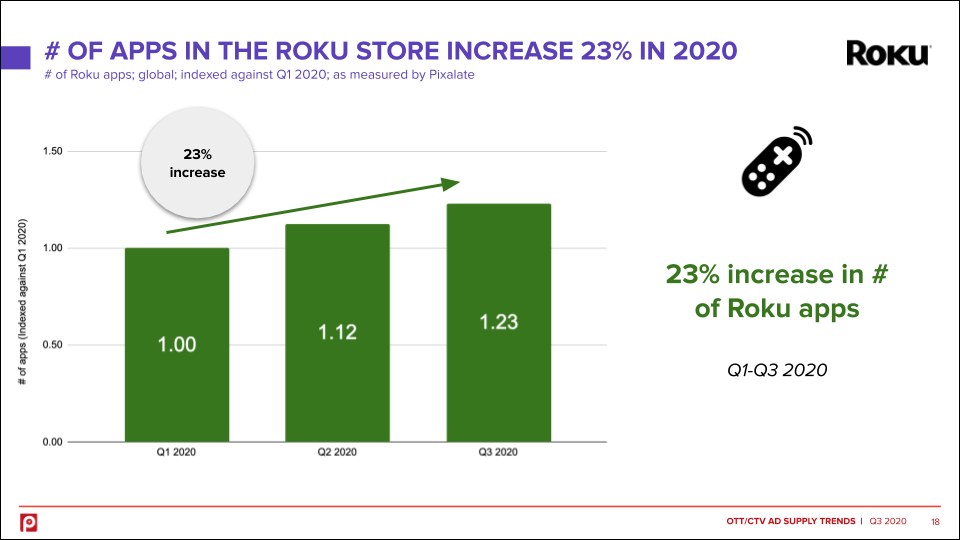
Pixalate's Q3 2020 State of Connected TV/OTT: Ad Supply Trends Report details how the programmatic OTT/CTV advertising marketplace changed from Q1 2020 to Q3 2020.
This blog post reveals the growth of the Roku Channel Store in 2020 on a quarter-by-quarter basis, as well as the growth of Roku apps that support programmatic OTT/CTV advertising.
Pixalate's State of Connected TV/OTT: Ad Supply Trends Q3 2020 Report includes:
Download a free copy of the State of Connected TV/OTT: Ad Supply Trends Q3 2020 Report today.
Disclaimer
The content of this blog post, and the State of Connected TV/OTT: Ad Supply Trends Q3 2020 Report (the "Report"), reflect Pixalate's opinions with respect to factors that Pixalate believes can be useful to the digital media industry. Pixalate's datasets — which are used exclusively to derive these insights — consist predominantly of open auction programmatic traffic sources. Any insights shared are grounded in Pixalate's proprietary technology and analytics, which Pixalate is continuously evaluating and updating. Any references to outside sources in the Report and herein should not be construed as endorsements. Pixalate's opinions are just that, opinions, which means that they are neither facts nor guarantees.
*By entering your email address and clicking Subscribe, you are agreeing to our Terms of Use and Privacy Policy.
These Stories on CTV
*By entering your email address and clicking Subscribe, you are agreeing to our Terms of Use and Privacy Policy.

Disclaimer: The content of this page reflects Pixalate’s opinions with respect to the factors that Pixalate believes can be useful to the digital media industry. Any proprietary data shared is grounded in Pixalate’s proprietary technology and analytics, which Pixalate is continuously evaluating and updating. Any references to outside sources should not be construed as endorsements. Pixalate’s opinions are just that - opinion, not facts or guarantees.
Per the MRC, “'Fraud' is not intended to represent fraud as defined in various laws, statutes and ordinances or as conventionally used in U.S. Court or other legal proceedings, but rather a custom definition strictly for advertising measurement purposes. Also per the MRC, “‘Invalid Traffic’ is defined generally as traffic that does not meet certain ad serving quality or completeness criteria, or otherwise does not represent legitimate ad traffic that should be included in measurement counts. Among the reasons why ad traffic may be deemed invalid is it is a result of non-human traffic (spiders, bots, etc.), or activity designed to produce fraudulent traffic.”

